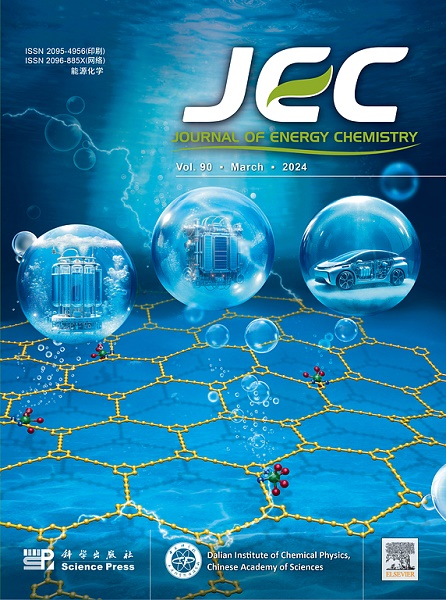Spontaneous charge redistribution with diverse nucleophilic and electrophilic sites in NiTe/Mo6Te8 for urea-assisted water electrolysis
IF 13.1
1区 化学
Q1 Energy
引用次数: 0
Abstract
Developing heterojunction catalysts with diverse adsorption sites presents significant opportunities to enhance the performance of urea-assisted water electrolysis. Herein, we highlighted a NiTe/Mo6Te8 heterojunction catalyst confined in carbon nanofiber with spontaneous charge redistribution driven by high valent metal, which promotes the adsorption and transformation of intermediates and greatly reduces the reaction energy barrier for urea oxidation. The heterojunction catalyst promotes the formation of Ni3+ active species and accelerates the fracture of the C–N bond by enhancing selective adsorption of –NH2 and C=O groups in binding urea molecules driven by the spontaneous formation of nucleophilic and electrophilic sites. The catalyst achieves a low kinetic current density of 10 mA cm−2 at 1.35 V with a cell voltage for urea electrolysis of just 1.47 V and good durability over 60 h. Density-functional theory and in-situ spectral observation reveal that the high valent Mo promoted the 3d orbit of Ni approaching the Fermi level by adjusting the electronic structure, which enhanced spontaneous urea dehydrogenation and reduced the energy barrier for *COO desorption. This study highlights the effectiveness of modulating the interfacial electronic structure to improve energy conversion efficiency.

求助全文
约1分钟内获得全文
求助全文
来源期刊

Journal of Energy Chemistry
CHEMISTRY, APPLIED-CHEMISTRY, PHYSICAL
CiteScore
19.10
自引率
8.40%
发文量
3631
审稿时长
15 days
期刊介绍:
The Journal of Energy Chemistry, the official publication of Science Press and the Dalian Institute of Chemical Physics, Chinese Academy of Sciences, serves as a platform for reporting creative research and innovative applications in energy chemistry. It mainly reports on creative researches and innovative applications of chemical conversions of fossil energy, carbon dioxide, electrochemical energy and hydrogen energy, as well as the conversions of biomass and solar energy related with chemical issues to promote academic exchanges in the field of energy chemistry and to accelerate the exploration, research and development of energy science and technologies.
This journal focuses on original research papers covering various topics within energy chemistry worldwide, including:
Optimized utilization of fossil energy
Hydrogen energy
Conversion and storage of electrochemical energy
Capture, storage, and chemical conversion of carbon dioxide
Materials and nanotechnologies for energy conversion and storage
Chemistry in biomass conversion
Chemistry in the utilization of solar energy
 求助内容:
求助内容: 应助结果提醒方式:
应助结果提醒方式:


